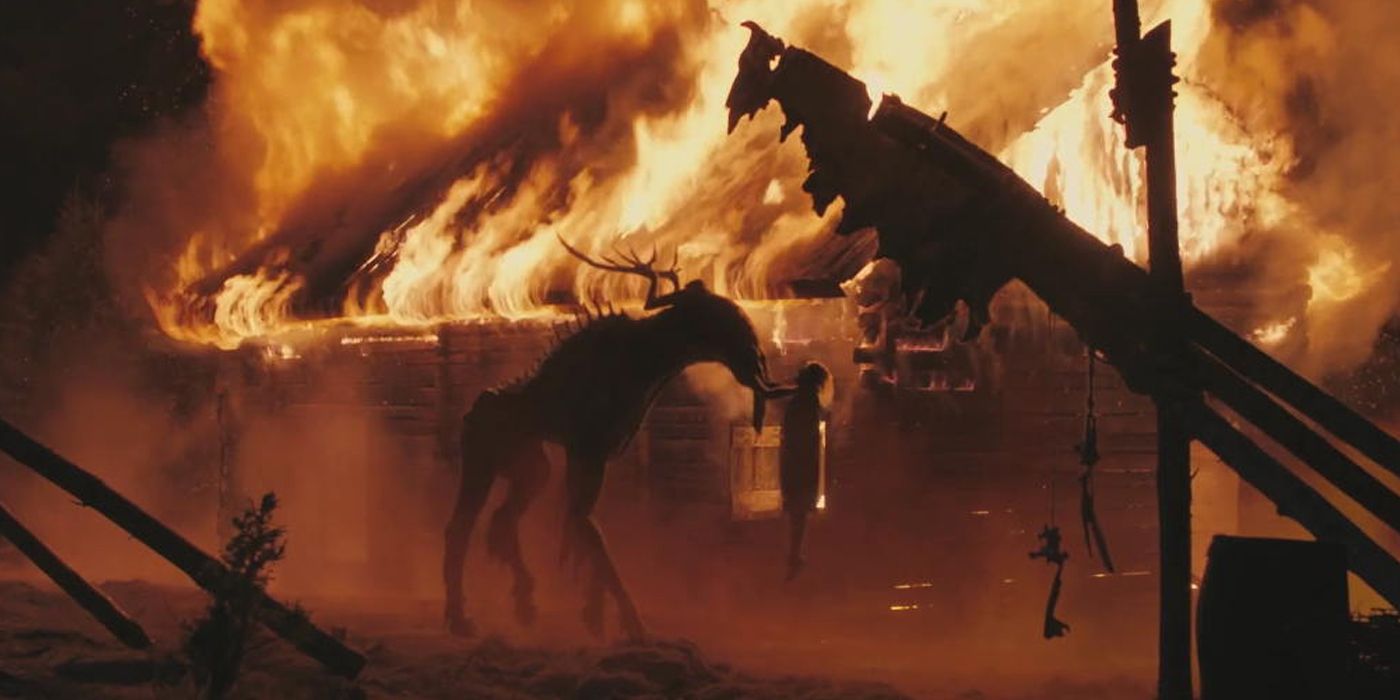The Ritual’s Creature Jötunn & Norse Mythology Origins Explained

Netflix original horror movie, The Ritual, channeled some of the darker, more terrifying elements of Norse mythology through its introduction of a terrifying creature known as the Jötunn.
The Ritual premiered in 2017 and was directed by David Bruckner. The film starred Rafe Spall, Arsher Ali, Robert James-Collier, and Sam Troughton. Drawing elements from The Blair Witch Project, and The Witch, The Ritual fits easily in the folk horror space, which has gone on to see more success with hits like Ari Aster's Midsommar and 2020's Gretel & Hansel, which managed to get mixed reviews from audiences and critics. Folk horror is an intriguing space, traditionally led by haunting cinematography, slow-burn terror, and an interesting story. In The Ritual, a group of friends are traveling for a hiking trip in Sweden after their friend's sudden death during a robbery; they make the trip in his memory, since they had discussed going right before his death.
While certainly not a traditional creature feature, The Ritual explores traditional elements of Norse mythology through its Jötunn and adapts more of a spooky, ethereal feel than giant monsters typically produce in films like Troll or even more B-list hits like Anaconda and Lake Placid. Such is the draw of folk horror, but it certainly begs the question of the myth's roots and how it differs from the tale presented by Bruckner's movie.

As the group of friends make their way into the woods for their hiking trip, they make the mistake that many people have been making in horror movies since the dawn of time: they stray from the marked trails and venture into unknown territory. Soon after, they start seeing everything from strange markings on trees and dead animals that have been ravaged and hung from the trees. It's bone-chilling, and certainly does not provide any semblance of security for the viewer, nor the friends as they start experiencing odd phenomena - nightmares, visions of a strange, horned figure in the trees, and even physical harm that leads to death.
Eventually, they discover that the creature in the woods - who is connected to the macabre effigy they discovered of a decapitated person built from branches with antlers for hands - is worshipped by a cult and given sacrifices so they can sustain immortality in return. According to the cult, the being they worship is the Jötunn, a bastard son of Loki. While it's certainly not uncommon for Gods throughout various pantheons to engage in behaviors that result in any number of strange offspring, Loki is particularly well-known for being a trickster in Norse mythology as well as a shapeshifter. Because of this, it's no surprise that his offspring would be odd and even malevolent, as Loki is often depicted as working against both Gods and humanity as it suits him.

In Norse mythology, a Jötunn is a little different. Most commonly, they are known as a species of giants who are marked with having superior strength and the advantage of massive size to bolster said strength. They are not quite like the spindly, antlered beast in The Ritual. If anything, they are more similar to dwarves or trolls. However, they are also a varied species, with some being the same height as humans. Jötunn are nature spirits, set apart from the Vanir and Æsir. Despite this tendency not to side with the traditional Gods of the Norse pantheon, some of the Gods are descendants of the Jötunn, including Odin and Thor. The Jötunn are some of the oldest beings in the Nine Worlds, and the stories about them frequently represent man's often tumultuous relationship with nature, a common theme in folk horror like The Ritual, as it is a place where legend, tradition, and the modern world often collide.
from ScreenRant - Feed https://ift.tt/2UDolzg
via Whole story

Post a Comment